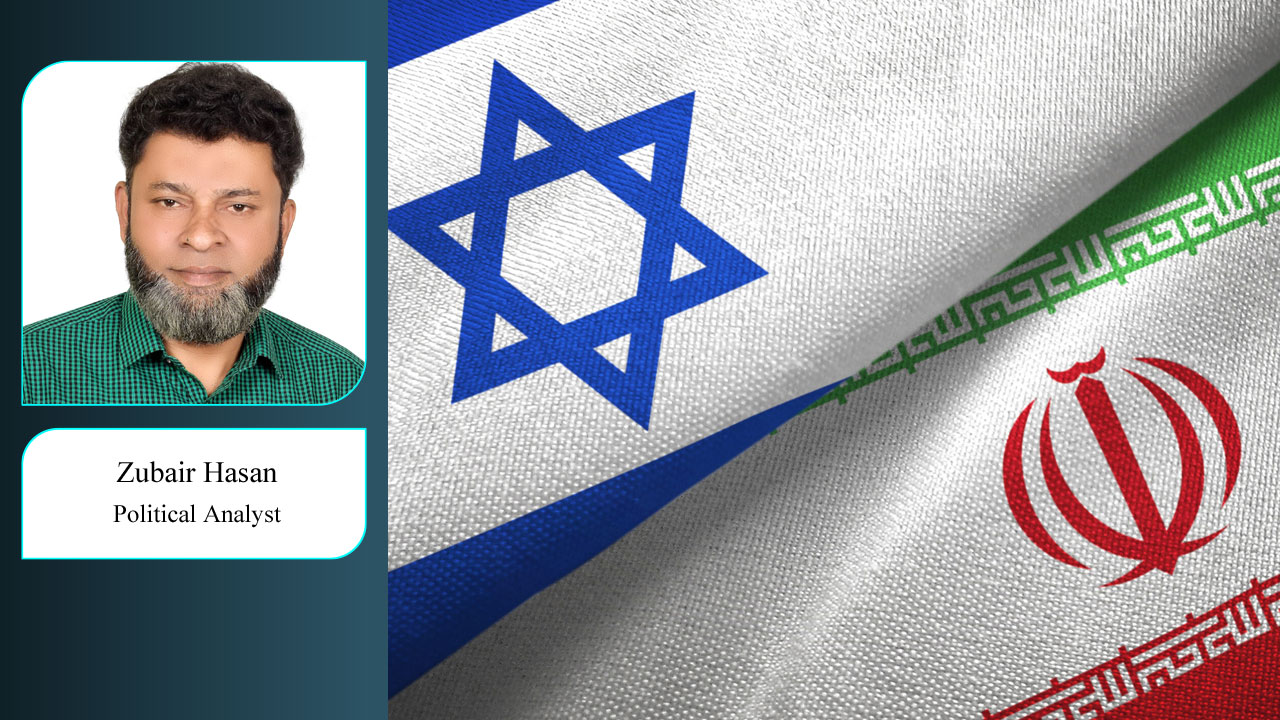India’s Rhetoric Against Bangladesh Risks Its Unity
13 April 2025, 04:44 pm

The Indian right-wing media’s recent frenzy over Professor Muhammad Yunus’s visit to China has reignited tired tropes of minority repression and radical Islamism in Bangladesh. This shrill narrative, amplified by outlets aligned with the ruling Bharatiya Janata Party (BJP) and its ideological mentor, the Rashtriya Swayamsevak Sangh (RSS), is steeped in irony. India, under BJP governance since 2014, has presided over a stark decline in minority rights, particularly for its 204 million Muslims (per the 2011 Census, with projections for 2025), who constitute over 14% of its 1.4 billion population. Reports of mob lynchings over cow slaughter—sacred to Hindus but not Muslims—have surged, with Human Rights Watch documenting dozens of such incidents since 2015. In 2023 alone, mosques in Uttar Pradesh and Haryana were draped in black cloth during Hindu festivals like Diwali, a deliberate act of erasure signaling Muslim subjugation. For India to chastise Bangladesh on minority issues is not just hypocritical—it’s shameless.
More provocatively, some Indian right-wing commentators have sketched outlines to partition Bangladesh, proposing a separate enclave for its Hindu minority, estimated at 11 million (roughly 8% of Bangladesh’s 170 million people, per 2021 figures). This notion is absurdly disproportionate when viewed against India’s own demographics: its 204 million Muslims dwarf Bangladesh’s Hindu population by a factor of 18. If Bangladesh were to mirror this logic, it could stoke unrest among India’s Muslims, potentially with backing from regional powers like China and Pakistan—nations with their own strategic interests in countering India’s dominance. Pakistan’s Inter-Services Intelligence (ISI) has historical precedent, having supported insurgencies in Punjab and Kashmir during the 1980s and 1990s. China, meanwhile, has deepened ties with Bangladesh, investing $38 billion in infrastructure via the Belt and Road Initiative by 2024. Together, they could arm and train dissidents, exploiting India’s religious fault lines. Yet, this tit-for-tat logic of division is a medieval relic. Modern nation-states, from post-World War II Europe to Southeast Asia’s ASEAN bloc, have prospered by embracing pluralism, not sectarianism—a lesson India seems intent on ignoring.
Bangladesh stands in stark contrast: 92% of its population is Muslim, and 99% speak Bangla, forging a cohesive national identity rare in South Asia. Its Hindu and tribal minorities, though vocal on local issues, show no appetite for separatism—a stability rooted in its 1971 liberation from Pakistan, won on linguistic unity rather than religious division. India, however, is a fractured mosaic. The Sikh demand for Khalistan traces back to the 1947 Partition, when Punjab was split, and intensified after the 1984 Operation Blue Star, where Indian forces stormed the Golden Temple, killing hundreds, followed by anti-Sikh riots that left over 3,000 dead. Kashmir’s unrest predates India’s independence, with a 1947 UN resolution for a plebiscite ignored, culminating in the 2019 revocation of Article 370, which ended its autonomy and triggered mass protests—over 100,000 detained since, per Amnesty International. Hyderabad, a princely state annexed in 1948 via Operation Polo, saw 40,000 Muslim deaths, per historian estimates, leaving a legacy of distrust. The “Seven Sisters” of the northeast—Assam, Nagaland, Manipur, Meghalaya, Tripura, Arunachal Pradesh, and Mizoram—host over 200 ethnic groups, many waging insurgencies since the 1950s; Nagaland’s rebellion alone has claimed 10,000 lives. These historical wounds, backed by data, reveal India’s vulnerability.
Bangladesh could weaponize this history against India’s provocations. A meticulously researched exposé—detailing the genesis of Khalistan, Hyderabad, Kashmir, and the Seven Sisters—would turn India’s own tactics of narrative-building against it. Indian writers have long excelled at weaving history and statistics into compelling arguments, as seen in works like Shashi Tharoor’s An Era of Darkness (2016), which meticulously cataloged British colonial sins. Bangladesh must match this rigor. For instance, Khalistan’s case could cite the 1984 riots’ death toll and the 1.5 million Sikhs still advocating autonomy, per diaspora surveys. Kashmir’s dossier could highlight the 70,000 deaths since 1989, per local NGOs, and Hyderabad’s the suppressed 1948 Razakar resistance. The Seven Sisters’ story could tally the 200+ ethnic militias active since 1966, per India’s Ministry of Home Affairs. Such a report, grounded in fact, could rally global scrutiny, exposing India’s hypocrisy on an international stage.
India’s propaganda war against Bangladesh is a perilous misstep. If Bangladesh retaliated—stoking India’s 204 million Muslims, 15 million Sikhs, and northeast’s 50 million tribal people with historical grievances—the Indian union could fracture. The Soviet Union’s 1991 collapse into 16 states offers a chilling parallel: a multi-ethnic giant undone by internal dissent and external pressure. India’s 22 official languages, 3,000 castes, and 29 states already strain its cohesion; add religious and regional separatism, and the math becomes untenable. Bangladesh’s 11 million Hindus pale in comparison to India’s powder keg of 269 million potential dissidents (Muslims, Sikhs, and northeast tribes combined).
New Delhi must see the stakes. Challenging Bangladesh’s sovereignty, even academically, will provoke a response—potentially a scholarly counteroffensive as potent as India’s own media machine. The BJP-RSS regime risks igniting a fire it cannot douse, one that could dismantle India’s union beyond repair. History and logic demand India rethink its reckless course—before the consequences spiral beyond its control.




